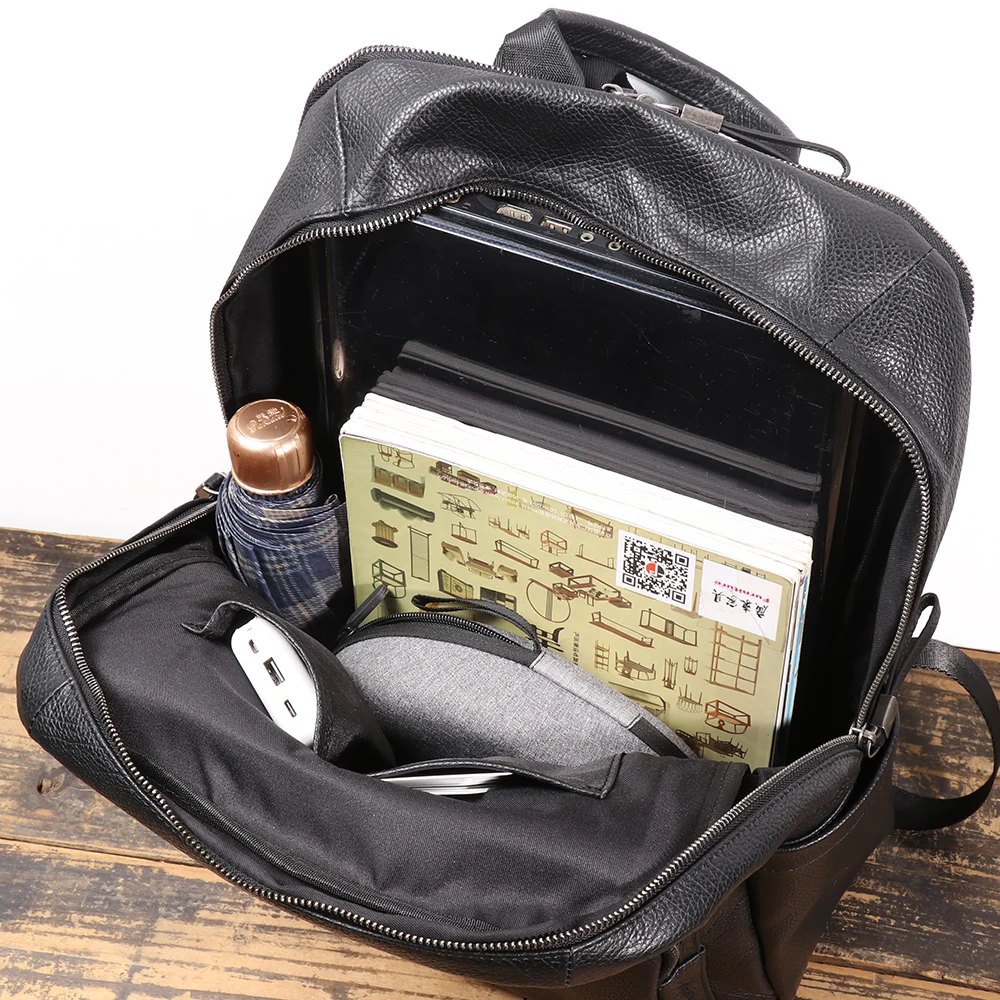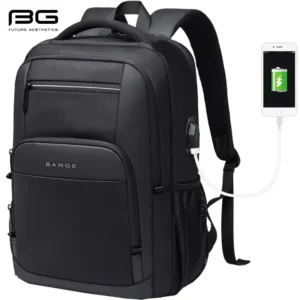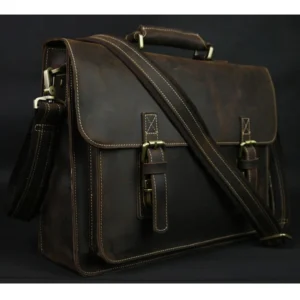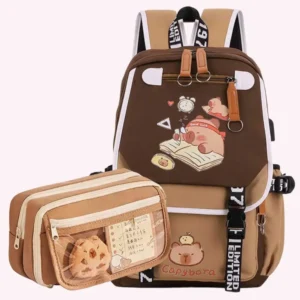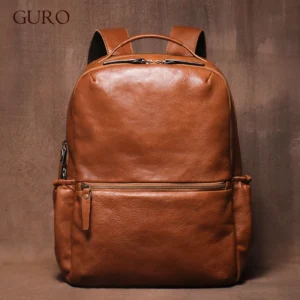Introduction: Why Invest in a Quality Leather Rucksack
A leather rucksack represents more than just a way to carry your belongings—it’s an investment in quality, style, and functionality that can last for decades. Unlike mass-produced synthetic bags that wear out after a few seasons, a well-crafted leather rucksack develops character over time, becoming uniquely yours as it ages.
The distinctive patina that forms on quality leather tells the story of your journeys, making each bag one-of-a-kind. While synthetic options might last 1-2 years with regular use, a properly constructed leather rucksack can serve you faithfully for 10+ years or even a lifetime with proper care.
However, not all leather rucksacks deliver on this promise of longevity and style. Understanding what separates exceptional craftsmanship from mediocre construction makes all the difference when making this investment. In this comprehensive guide, we’ll explore everything from leather quality and construction techniques to comfort features and organizational designs.
Whether you’re considering your first leather rucksack or looking to upgrade to something truly special, our comprehensive buyers guide will help you identify the features that matter most. Let’s explore what makes a quality leather rucksack worth every penny.
Understanding Leather Quality: The Foundation of a Great Rucksack
The type of leather used determines not only how your rucksack will look initially but how it will age, wear, and function throughout its lifetime. Understanding leather quality is the first critical step in making a wise investment.
When evaluating leather quality, understanding the optimal thickness for backpack construction is essential for durability without excessive weight.
Full-Grain Leather: The Premium Choice
Full-grain leather represents the highest quality leather available, taken from the top layer of the hide with its natural surface left intact. This premium material retains the hide’s original grain and all natural markings, resulting in unique character in every piece.
What makes full-grain leather exceptional:
– Strongest and most durable leather type due to its dense fiber structure
– Develops a beautiful patina over time that enhances its appearance
– Natural water resistance that increases with proper conditioning
– Breathable material that adjusts to climate conditions
You can identify full-grain leather by its natural imperfections, visible pores, and subtle variations in color and texture. While typically priced higher than other leather types, full-grain leather backpacks offer unmatched durability and aging characteristics that make them worth the investment.
Top-Grain Leather: The Practical Alternative
Top-grain leather comes from the upper portion of the hide but has been sanded or buffed to remove imperfections. This creates a more uniform appearance while maintaining good durability.
Key characteristics of top-grain leather include:
– Thinner and more pliable than full-grain, making it lighter and more flexible
– More consistent appearance with fewer natural markings
– Good durability, though not as long-lasting as full-grain
– Less expensive while still offering quality craftsmanship potential
You can recognize top-grain leather by its more uniform appearance and slightly smoother feel compared to full-grain. It represents an excellent middle ground between premium quality and price, making it a practical choice for many buyers.
Genuine Leather & Bonded Leather: Potential Pitfalls
Despite its misleading name, “genuine leather” actually indicates a lower quality product. It’s made from the layers of hide that remain after the top and full-grain portions are removed, then treated heavily with chemicals and dyes to mimic higher grades.
Bonded leather takes this a step further, consisting of leather scraps and fibers mixed with adhesives and pressed into sheets with an artificial grain stamped on the surface.
Warning signs to watch for:
– Artificially uniform appearance without natural character
– Chemical smell rather than natural leather scent
– Tendency to crack, peel, or flake after minimal use
– Vague descriptions focusing on “genuine leather” without specifying grade
These materials typically fail within 1-2 years of regular use, making them poor investments despite their lower initial cost.
Specialty Leathers: Understanding Unique Options
Beyond standard leather grades, several specialty leather types offer unique characteristics:
Crazy Horse leather features a distinctive pull-up effect where the color lightens when the surface is stretched or scratched, creating a vintage appearance that highlights use patterns.
Vegetable-tanned leather uses natural tannins from plants rather than chemicals, creating an environmentally friendly product that develops exceptional patina but requires more care.
Chrome-tanned leather provides greater water resistance and consistent color but with less character development over time.
For environmentally conscious consumers, eco-leather options utilize sustainable production methods while still providing quality and durability.
Craftsmanship & Construction: Beyond the Material
Even the finest leather can’t compensate for poor construction. Quality craftsmanship ensures that your rucksack will withstand daily use and maintain its structural integrity for years.
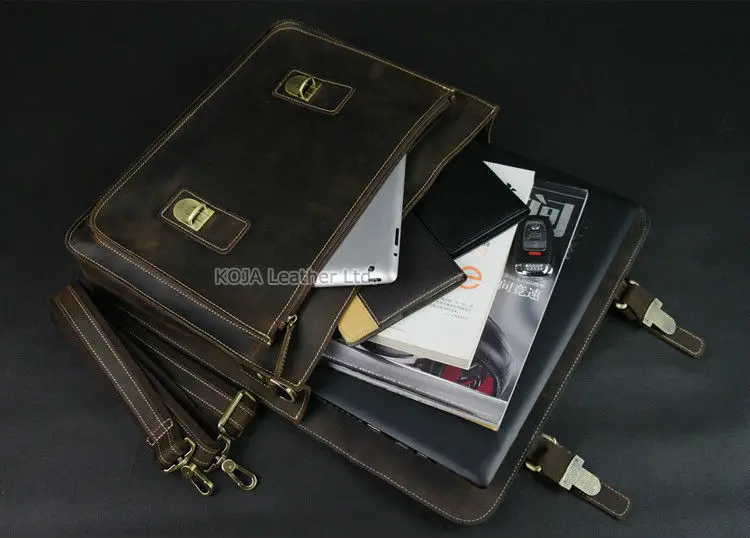
Stitching Quality: The Backbone of Durability
Stitching is the literal thread that holds your rucksack together, making it one of the most critical construction elements to evaluate.
What to look for in quality stitching:
– Even, tight stitches with consistent density throughout
– Double stitching at stress points like handles, straps, and bottom seams
– Saddle stitching (two needles working through the same hole from opposite sides) on premium rucksacks
– No loose threads, puckering, or uneven tension
Quality stitching should be nearly invisible on the surface, with each stitch precisely placed and secured. Pay special attention to areas where straps attach to the bag body, as these connection points endure significant stress during daily use.
Hardware Quality: Small Details With Big Impact
The metal components on your rucksack—buckles, zippers, D-rings, and snaps—often fail long before the leather shows significant wear. Quality hardware makes a substantial difference in both function and longevity.
Hardware quality checklist:
– Solid brass or stainless steel components that won’t rust or break
– Smooth zipper action with sturdy teeth and pulls
– Buckles and clasps that close securely without slipping
– Reinforced attachment points where hardware connects to leather
– Weight that feels substantial rather than flimsy
Premium manufacturers often use branded hardware such as YKK zippers or Riri snaps, which signals attention to quality. While these components add to the cost, they prevent the frustration of hardware failure rendering an otherwise excellent bag unusable.
Interior Construction & Reinforcement
The interior of a quality leather rucksack should receive as much attention as its exterior. Thoughtful interior construction not only protects your belongings but also helps the bag maintain its shape over time.
Key interior quality indicators:
– Durable lining material that resists tearing and staining
– Reinforced stress points, especially at the bottom corners
– Edge finishing that prevents leather fraying or lining separation
– Bottom reinforcement that provides structure and protection
– Clean seams with no exposed raw edges
A well-designed interior complements the specific features needed for different uses, from daily commuting to weekend travel. The interior should feel as thoughtfully crafted as the exterior, with attention to both function and finish.
Functionality & Organization: Practical Features That Matter
A beautiful rucksack that doesn’t serve your needs becomes a burden rather than an asset. Thoughtful organization and practical features transform a simple bag into an everyday essential.
Compartment Design & Accessibility
How your rucksack organizes space dramatically affects its utility for your specific needs. The main compartment design should balance capacity, accessibility, and security.
Consider these compartment characteristics:
– Wide-opening top flaps or full-zip designs for easy access to contents
– Logical depth that prevents items from disappearing at the bottom
– Internal dividers that create separation without wasting space
– Secure closure mechanisms appropriate for intended use
The organization of your leather backpack should match your daily carrying needs. Someone carrying primarily documents and a laptop needs different organization than someone using their rucksack for travel or outdoor activities.
Tech Integration & Protection
Modern rucksacks need to accommodate and protect electronic devices. Quality leather rucksacks integrate tech protection without compromising their classic aesthetic.
Features to look for:
– Padded laptop compartment with suspended design to absorb impact
– Tablet sleeve with soft, scratch-resistant lining
– Cable management systems to organize chargers and accessories
– Easily accessible pockets for frequently used devices
Leather laptop backpacks specifically designed with tech protection offer peace of mind while maintaining sophisticated style. These specialized designs ensure your valuable electronics stay secure without sacrificing the timeless appeal of leather.
Pockets & Organization Systems
Thoughtful organization transforms a simple bag into a daily essential that streamlines your routine. The placement and design of pockets should match your personal organization style.
Useful organization features include:
– Quick-access external pockets for frequently needed items
– Secure internal pockets for valuables
– Pen holders, key clips, and card slots for small essentials
– Water bottle pockets positioned for balance and accessibility
Consider your daily essentials and ensure the rucksack provides appropriate storage for each. Too many specialized compartments can add unnecessary weight and complexity, while too few can leave your belongings jumbled and difficult to find.
Comfort & Ergonomics: Carrying With Ease
Even the most beautiful rucksack will stay in your closet if it’s uncomfortable to wear. Quality leather rucksacks should be designed with human anatomy in mind, distributing weight evenly and minimizing strain.
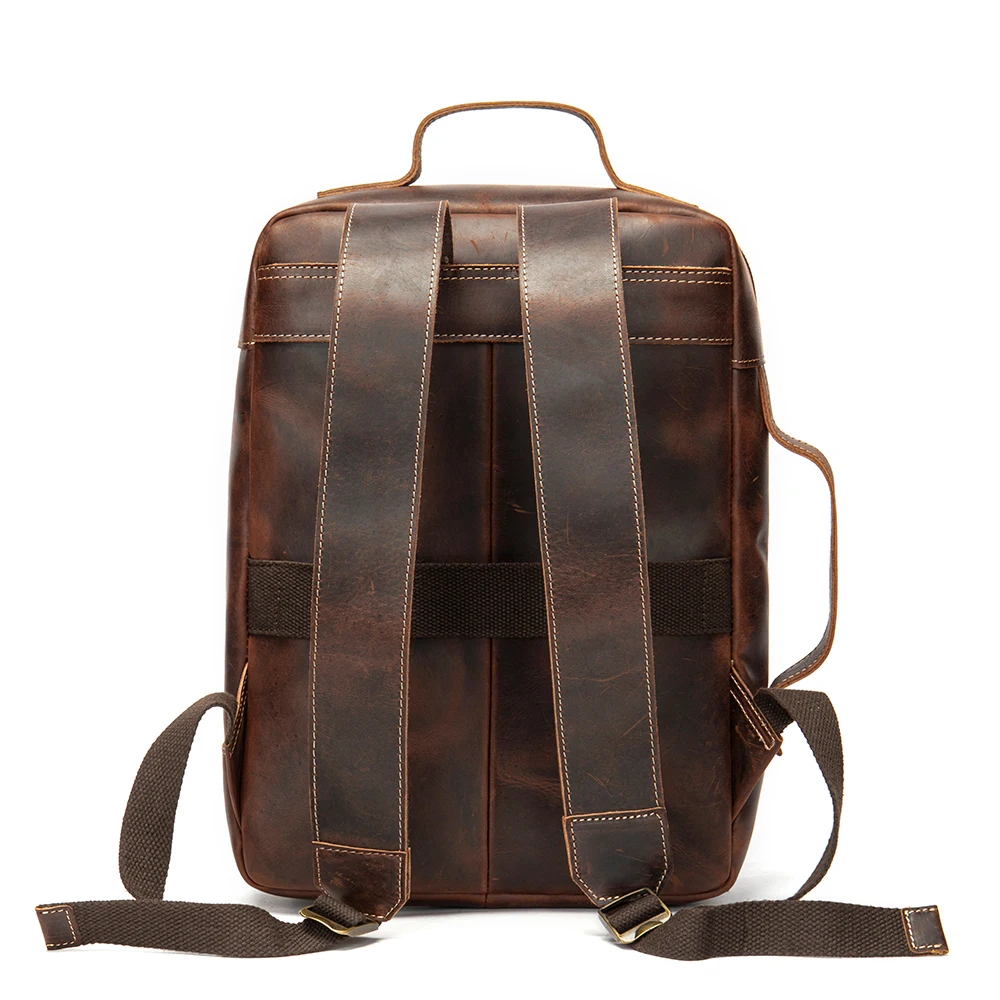
Shoulder Strap Design & Padding
Shoulder straps bear most of the weight of your rucksack, making their design crucial for comfort during extended wear.
Qualities of comfortable shoulder straps:
– Width proportional to the bag’s capacity (wider straps for larger rucksacks)
– Dense foam padding that compresses without bottoming out
– Contoured shape that follows shoulder anatomy
– Adjustable length to accommodate different body types and wearing preferences
Pay attention to how straps attach to the bag—reinforced stitching and bar tacking (dense zigzag stitching) indicate straps designed for heavy loads and longevity.
Back Panel Construction & Weight Distribution
The part of your rucksack that rests against your back affects both comfort and airflow, which becomes especially important during warm weather or active use.
Quality back panel features include:
– Padding that cushions against hard objects inside the bag
– Ventilation channels or mesh to reduce heat buildup and sweating
– Structural elements that prevent the bag from collapsing or bulging
– Contoured design that follows the natural curve of your back
A well-designed back panel makes the difference between a comfortable all-day companion and a bag you can’t wait to take off.
Additional Comfort Features
Beyond the basics of straps and back panels, premium rucksacks often include additional features that enhance carrying comfort.
Valuable comfort enhancements:
– Sternum straps that prevent shoulder straps from sliding outward
– Top carry handle with adequate padding for hand carrying
– Load lifters that adjust the bag’s position against your back
– Side compression straps to stabilize partial loads
Understanding different types of closures in leather backpacks also impacts comfort, as they affect how quickly you can access your belongings and secure your load.
Style & Versatility: Beyond Function
While practical considerations are paramount, the aesthetic appeal of a leather rucksack contributes significantly to its value and versatility. The best rucksacks balance timeless design with personal style.
Design Aesthetics & Personal Style
Leather rucksacks generally fall into distinct design categories, each with its own aesthetic appeal and practical implications:
- Classic designs feature traditional elements like flap closures and buckle straps, offering timeless style that never looks dated
- Modern minimalist designs emphasize clean lines and subtle details, working well in professional environments
- Rugged designs highlight natural leather characteristics and visible craftsmanship for casual and outdoor settings
- Vintage-inspired styles incorporate weathered finishes and antique hardware for distinctive character
The best design is one that resonates with your personal style while serving your practical needs. Consider how the rucksack will pair with your typical wardrobe and the settings where you’ll use it most frequently.
Patina Development & Character
One of leather’s most remarkable qualities is how it develops character over time. Quality leather doesn’t just age—it evolves, developing a patina that reflects its journey with you.
Different leathers develop patina in distinct ways:
– Full-grain leather darkens and develops rich color variations where it contacts skin oils
– Vegetable-tanned leather shows dramatic color evolution with sun exposure
– Oil-infused leathers like Crazy Horse develop highlighted wear patterns at flex points
This natural aging process transforms a leather rucksack from a manufactured product into a personal artifact, telling the story of your experiences together.
Versatility Across Settings
A truly valuable leather rucksack transitions seamlessly between different environments and uses. Consider how the bag will perform across the full range of your lifestyle needs.
Versatility considerations:
– Professional environments often favor structured designs in classic colors
– Casual settings accommodate more rugged finishes and relaxed structures
– Travel requires adaptability to different carrying needs and situations
– Seasonal changes may affect both functionality and appropriate styling
Neutral colors like brown, tan, black, and navy offer maximum versatility, while distinctive hardware and structural details add personality without limiting the bag’s adaptability.
Maintenance Requirements: Ensuring Longevity
Quality leather requires care to reach its full potential and lifespan. Understanding maintenance requirements before purchasing helps you select a rucksack that fits not just your style and functional needs but also your willingness to perform ongoing care.
Basic leather maintenance includes:
– Regular cleaning with appropriate leather cleaners
– Conditioning to restore moisture and prevent drying or cracking
– Waterproofing treatments for protection against the elements
– Storage considerations to maintain shape and prevent damage
Different leather types require different care approaches. Full-grain leather generally requires more regular conditioning but rewards this attention with beautiful aging. Chrome-tanned leathers typically need less frequent care but benefit from occasional cleaning and conditioning.
Proper maintenance of your leather backpack isn’t just about preserving its appearance—it’s about protecting your investment. A well-maintained leather rucksack can last decades, while neglected leather can dry, crack, and deteriorate prematurely.
14 Inch Leather Laptop Backpack, Brown Leather Backpack, Men's Leather Backpack, Vintage Leather Backpack
Price range: $177.28 through $199.12 Select options This product has multiple variants. The options may be chosen on the product pageDesigner Men's Backpack, Men's Leather Laptop Backpack, Men's Leather Work Backpack
Price range: $158.04 through $160.04 Select options This product has multiple variants. The options may be chosen on the product page15 Inch Leather Laptop Backpack, Leather Briefcase Backpack
$332.96 Select options This product has multiple variants. The options may be chosen on the product page17 Inch Leather Laptop Backpack, Men's Leather Travel Backpack, Men's Leather Work Backpack
Price range: $106.28 through $143.88 Select options This product has multiple variants. The options may be chosen on the product page- Price range: $80.72 through $108.04 Select options This product has multiple variants. The options may be chosen on the product page
Full Grain Leather Backpack, Men's Leather Laptop Backpack, Men's Leather Work Backpack
$353.46 Select options This product has multiple variants. The options may be chosen on the product page
Common Mistakes to Avoid When Choosing a Leather Rucksack
Even savvy shoppers can fall prey to common pitfalls when selecting a leather rucksack. Being aware of these mistakes helps you make a more informed decision:
Prioritizing price over quality: Opting for the cheapest option often results in premature replacement and higher long-term costs.
Overlooking construction details: Beautiful leather can’t compensate for poor stitching or flimsy hardware that fails quickly.
Being misled by terminology: Terms like “genuine leather” sound premium but actually indicate lower quality materials.
Neglecting comfort features: A stylish bag that causes discomfort won’t be used regularly, regardless of its appearance.
Choosing fashion over function: Trendy designs may look great but fail to meet your practical carrying needs.
Ignoring maintenance requirements: Every leather type requires some level of care—be honest about your willingness to provide it.
Mismatching the bag to your lifestyle: A rucksack designed for hiking won’t serve well in corporate settings, and vice versa.
Underestimating capacity needs: Consider both daily essentials and occasional extras when evaluating size requirements.
Understanding different leather backpack styles helps avoid many of these mistakes by clarifying which designs best suit your specific needs.
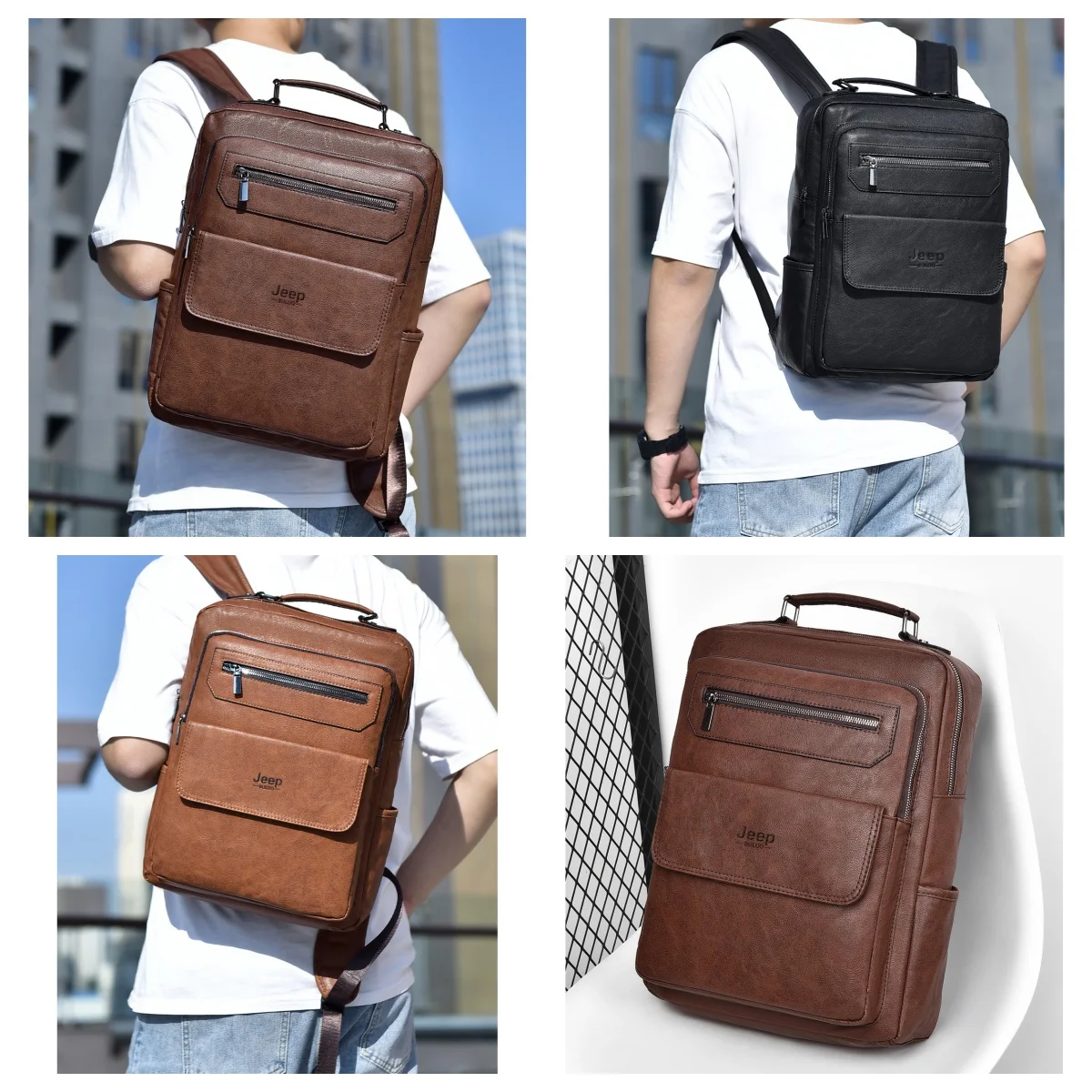
Value Assessment: Making a Worthy Investment
A quality leather rucksack represents a significant initial investment, but its true value emerges over time through daily use and longevity.
When assessing value, consider:
Cost per use: A $300 rucksack used daily for 5 years costs just 16 cents per use—far less than replacing cheaper bags multiple times.
Versatility factor: Bags that transition between multiple environments and purposes deliver greater value than single-use designs.
Repair potential: Quality leather goods can often be repaired rather than replaced, extending their useful life significantly.
Timeless appeal: Classic designs resist trend cycles, remaining relevant and appropriate year after year.
The sweet spot for value typically falls in the middle-to-upper price range, where quality materials and construction are consistent without paying primarily for brand prestige. For travel specifically, selecting the right travel rucksack involves additional considerations to ensure maximum value for your journeys.
Summit Carry’s leather rucksacks exemplify this balance of quality craftsmanship, thoughtful design, and lasting value. By focusing on premium materials and construction techniques, these leather rucksacks are designed not just to serve your needs today but to become trusted companions for years of adventures ahead.

